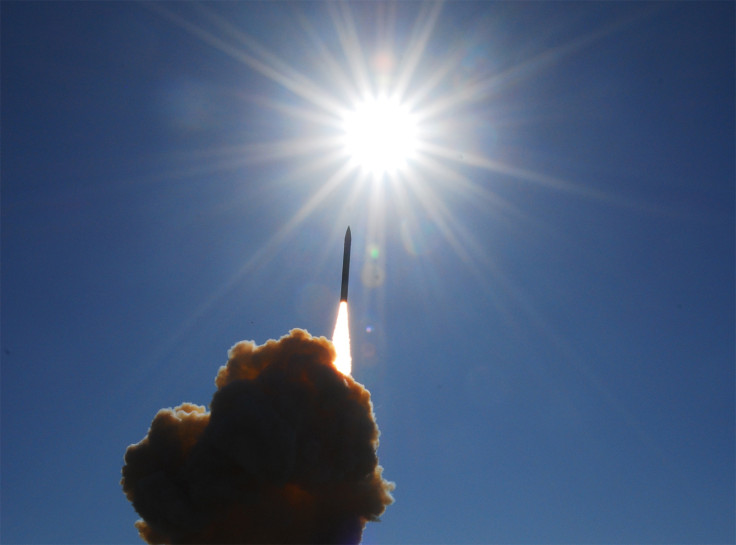Pentagon scientists: $40bn US anti-missile interceptors won't prevent a nuclear missile attack
Anti-missile interceptor thrusters now rolling out across the US failed launch flights despite Pentagon claims.

The US anti-missile interceptors currently being installed across the US as a defensive measure in case of a nuclear missile attack contain flaws, despite the Pentagon touting the technology's most recent test flight as a resounding success.
Anti-missile interceptors, also known as anti-ballistic missiles, are surface-to-air missile systems designed to intercept incoming ballistic missiles. In the US, the system is called Ground-Based Midcourse Defense (GMD) and it uses a kinetic projectile to intercept enemy warheads in space and detonate them safely outside the Earth's atmosphere.
The system was first conceptualised during the Clinton administration in 1998 and was eventually developed and deployed by George W Bush's administration before becoming operational in 2004.
However now an investigation has found that in fact the small rocket thrusters within the anti-missile interceptors that provide propulsion in fact have performance problems that would cause the interceptors to veer off-course, and on top of that, no move is being made to replace the thrusters in the 30 anti-missile interceptors already in existence.
Pentagon scientists, speaking on condition of anonymity, told the LA Times that the GMD system, which has already cost US taxpayers over $40bn (£31bn), has actually failed to intercept and destroy mock warheads about 50% of the time in carefully scripted tests, and the Pentagon's so-called "successful" test flight on 28 January was in fact dogged by technical problems.
"The mission wasn't successful"

"The mission wasn't successful," one of the scientists said, explaining that one of the thrusters failed, causing the interceptor to fly in a wide "miss distance" of the target that was 20 times greater than expected. "Did the thruster perform as expected? No, it did not provide the control necessary for a lethal impact of an incoming threat."
The press release released after the test flight by Aerojet Rocketdyne, which makes the rocket thrusters within the interceptors, paints a much more positive picture: "This successful flight represented three years of hard work and dedication by our entire team. We are very proud of this accomplishment and look forward to many years of production of this advanced propulsion system."
Similarly positive press releases were issued by Raytheon, a contractor that assembles the thrusters, as well as from the Missile Defense Agency (a branch of the US Dept of Defense), but when questioned, the agency admitted that there was a problem during the test flight.
"There was an observation unrelated to the new thruster hardware that has been investigated and successfully root-caused," the agency said. "Any necessary corrective actions will be taken for the next flight test."
Flawed thrusters still being deployed in current interceptors
At the moment, there are 30 operational interceptors stationed at the Vandenberg Air Force Base in California and at Fort Greely in Alaska, and the Obama administration is pushing ahead with plans to have an additional 14 interceptors installed at Fort Greely by the end of 2017.
However the Pentagon scientists say that the thrusters have never worked that well and failed to hit their targets during successive test flights in 2010 due to various technical problems including a missing fastener in the thruster assembly and severe vibrations that disrupted the interceptor's internal guidance system.
A new thruster model was designed and failed a ground test in 2013, so instead officials decided to leave the original thruster model with its various problems in the 30 currently deployed interceptors. On top of this, in order to get all the new interceptors deployed by end of 2017, the old flawed thruster will also be installed in four of the 14 new interceptors, while the latest version of the thruster from the January test flight will be used in the remaining 10 interceptors.
Perhaps the US military is reasoning that there won't be a nuclear missile attack any time soon, but it still seems pretty pointless to have an active defence system in place that doesn't actually work properly.
© Copyright IBTimes 2025. All rights reserved.





















